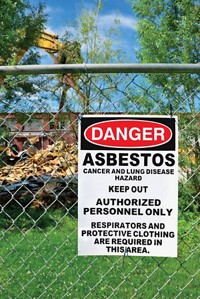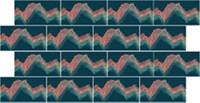Advertisement
Grab your lab coat. Let's get started
Welcome!
Welcome!
Create an account below to get 6 C&EN articles per month, receive newsletters and more - all free.
It seems this is your first time logging in online. Please enter the following information to continue.
As an ACS member you automatically get access to this site. All we need is few more details to create your reading experience.
Not you? Sign in with a different account.
Not you? Sign in with a different account.
ERROR 1
ERROR 1
ERROR 2
ERROR 2
ERROR 2
ERROR 2
ERROR 2
Password and Confirm password must match.
If you have an ACS member number, please enter it here so we can link this account to your membership. (optional)
ERROR 2
ACS values your privacy. By submitting your information, you are gaining access to C&EN and subscribing to our weekly newsletter. We use the information you provide to make your reading experience better, and we will never sell your data to third party members.
Policy
Weighing Toxic Torts
Book outlines the gulf between science and the law
by Bette Hileman
October 15, 2007
| A version of this story appeared in
Volume 85, Issue 42

Individuals or groups who claim harm from a pharmaceutical or chemical may sue the manufacturer or other responsible party in court in what is known as a toxic tort—or personal injury—lawsuit. In the popular imagination, often inspired by movies and TV shows, experts for the plaintiff explain to a jury the scientific reasons why the injury was caused by a particular substance. The defendant's experts, in turn, lay out their side of the story. After both sides are presented, a jury decides whether the defendant is responsible for the injury.
In his carefully reasoned book, "Toxic Torts: Science, Law and the Possibility of Justice," Carl F. Cranor paints a different picture of reality in the courtroom today for toxic tort suits involving chemicals. In contrast to the ideal situation, judges in these civil suits don't always know how to weigh scientific evidence and sometimes fail to admit valid data, he explains. The expense of gathering scientific evidence that can withstand judicial scrutiny can scuttle cases before they even begin.
In many toxic tort cases, Cranor argues, some expert witnesses, especially those hired by the plaintiff, are not allowed to present their case to the jury. Before 1993, he says, judges had the right to exclude expert evidence, but few took advantage of this right. But since 1993, when the Supreme Court handed down the decision known as Daubert, judges in civil toxic tort cases have far more frequently prevented experts from presenting scientific evidence to a jury, Cranor says.
The Daubert v. Merrill Dow Pharmaceuticals Inc. ruling instructed federal judges to act as "gatekeepers" in the courtroom and to review evidence before it is presented to a jury. It directed judges to examine the method or reasoning underlying expert evidence and to admit only evidence that is both reliable and relevant. Evidence must be based on a testable peer-reviewed theory with a known error rate and must be generally accepted by the scientific community. The Supreme Court said that judges could no longer defer entirely to the jury to decide whether data are reliable. The court cautioned, however, that the criteria are not to be used as a checklist on each component of the testimony.
Cranor, a philosophy professor at the University of California, Riverside, claims that Daubert and two follow-on Supreme Court decisions have resulted in mistaken reviews of scientific evidence that have in many cases led judges to bar experts from presenting valid scientific arguments to a jury. Instead of examining scientific evidence as a body of knowledge, judges often apply the Daubert criteria to each individual component of that knowledge and refuse to admit those components that don't satisfy all the criteria, Cranor says. This practice has led to a gulf between science and the law, he argues.
Rather than looking at studies in isolation, toxicologists generally take a weight-of-evidence approach in deciding whether a chemical or drug causes cancer or some other adverse health effect. They look at epidemiological studies, if such are available; lab animal studies; in vitro and DNA data; mechanistic studies that reveal how substances act in human or animal physiology; chemical structure-biological activity relationships; and published human case reports of harm from a drug or other chemical.
For most chemicals and drugs, no single study provides a convincing case that a substance harms human health. Toxicologists look at this entire body of evidence, giving greater or lesser weight to different studies, to decide about health effects. The procedure is complicated but well-accepted among toxicologists and among researchers working on drug discovery.
A minority of judges, Cranor says, understands this science of causation and knows that allowing a jury to hear evidence in a variety of toxicological areas will lead to the most valid assessment of whether a plaintiff has been harmed by a particular chemical or drug. They realize that applying Daubert criteria in a rigid, formulaic way to each piece of evidence violates science. But most judges do not employ the Daubert criteria properly, Cranor says. The majority admits epidemiological data and a few selected animal studies and tends to bar all other types of toxicological evidence, he says. They are likely to exclude evidence if it fails to meet a single one of the Daubert standards, even though the Supreme Court ruling warned judges not to use them as a checklist. Many judges eliminate animal studies if they appear weak or if the animals were exposed to doses several times higher than what humans are exposed to.
In the book, Cranor cites many cases in which judges have mistakenly excluded animal studies, as well as in vitro and structure-activity data, from the courtroom. For example, he explains, in a 1996 case involving exposure to ethylene oxide and brain cancer, the plaintiff's experts were not allowed to present a variety of animal and limited epidemiological studies suggesting that ethylene oxide causes brain cancer. In other cases, judges have mistakenly demanded that the plaintiff's case be supported by a series of consistent epidemiological studies and an animal model that duplicates the effects allegedly seen in humans. For example, in a 1994 case involving the over-the-counter asthma medication Primatene, the judge did not allow the case to go to trial unless the plaintiffs' experts could present consistent epidemiological studies and experiments with lab animals showing the same birth defect that was seen in the children prenatally exposed to Primatene.
This practice of not allowing juries to hear about a variety of relevant toxicological studies has led to a disconnect between science and the law, Cranor says, and has kept many citizens who have been harmed by toxic substances from being justly compensated.
In fact, Cranor cites statistics showing that scientific evidence is being challenged and thrown out before trial much more frequently since the Daubert ruling. If the plaintiff's experts are not allowed to testify, the plaintiff cannot prove harm from a chemical or drug, and the judge will then grant a summary judgment for the defendant. That ends the case. According to a study by the RAND Institute for Civil Justice, the percentage of summary judgments granted after the Daubert decision in 1993 more than doubled, with 90% of them going against plaintiffs.
Since Daubert, judges have also been highly inconsistent with the kinds of evidence they have excluded from toxic tort cases, Cranor says. He describes three lawsuits filed in the early 1990s involving Parlodel, a drug used to suppress lactation after childbirth. In two cases, the judge did not admit animal evidence showing that Parlodel constricts blood vessels, which would increase the risk of heart attack and stroke. But in another very similar case, the judge admitted the evidence.
Another problem for plaintiffs is that most chemical products—except for pharmaceuticals, food additives, and pesticides—enter the marketplace with little or no premarket testing. So a chemical that is the subject of a lawsuit may have undergone very limited testing. The combination of inadequate toxicity data and judges' lack of understanding of how to assess and weigh the data that are available can make it very difficult for injured plaintiffs to win compensation in court, Cranor claims.
Although Cranor presents a bleak view of how judges evaluate scientific evidence in toxic tort cases, he maintains that there are many practical, but not simple, ways to improve the situation. First, he writes, courts must become "knowledgeable, sensitive, thoughtful consumers of scientific studies and inferences." Judges need to avoid using overly restrictive criteria for reviewing evidence. Simple rules cannot easily accommodate the evidentiary picture in science, he explains. Judges need to conduct admissibility reviews that recognize "the multifaceted, varied nature of scientific evidence." They need to recognize that, according to the Supreme Court ruling, the Daubert criteria are not to be applied to each component of the evidence.
Judges should avoid demanding ideal evidence or insisting on epidemiological studies, Cranor says. They should admit animal studies and structure-activity evidence, as well as relevant individual human case reports, he writes. A single case report may indicate an extremely rare phenomenon, but a series of similar case reports may point to a serious problem. The Food & Drug Administration uses case reports of adverse reactions to vaccines or pharmaceuticals to alert the agency to problems that did not show up in clinical trials. In short, judges should "review scientific evidence as an integrated whole," Cranor says.
To aid in tort law admissibility reviews, judges should make greater use of court-appointed scientific experts, Cranor suggests. Just as scientists at the Environmental Protection Agency adjudicate the claims of opposing parties, independent scientists, if chosen carefully, could serve an important purpose in toxic tort cases, he writes.
Cranor proposes another remedy that would avoid many cases of harm from toxic substances and therefore numerous lawsuits. This would be to change the laws and require much more testing of chemicals before they appear in the marketplace. "There is simply too little science required up front before substances enter commerce and people are exposed," he writes.
This carefully documented book should be required reading for all judges who deal with tort law and for law students or lawyers planning to specialize in the defense of citizens who claim they have been harmed by drugs or toxicants. It should also be read by chemistry students who are interested in the societal problems sometimes created by the production and use of chemicals. No other book that I have encountered so carefully delineates the great gulf between the science of toxicology and what is now happening in the judicial system.




Join the conversation
Contact the reporter
Submit a Letter to the Editor for publication
Engage with us on Twitter